The pre-wedding celebration of Anant Ambani, the youngest son of Asia’s richest man Mukesh Ambani, has sparked widespread discussion.
While the “dance for the gods” by the beautiful bride-to-be, the lavish party costing approximately $200 million, and even the high-profile guest performer Rihanna have all attracted attention, nothing has caught the public eye quite like the enormous emerald necklace worn by the billionaire’s wife, Nita Ambani.
This piece of jewelry has been playfully dubbed the “Vicks VapoRub bottle” by netizens due to its striking size and color.
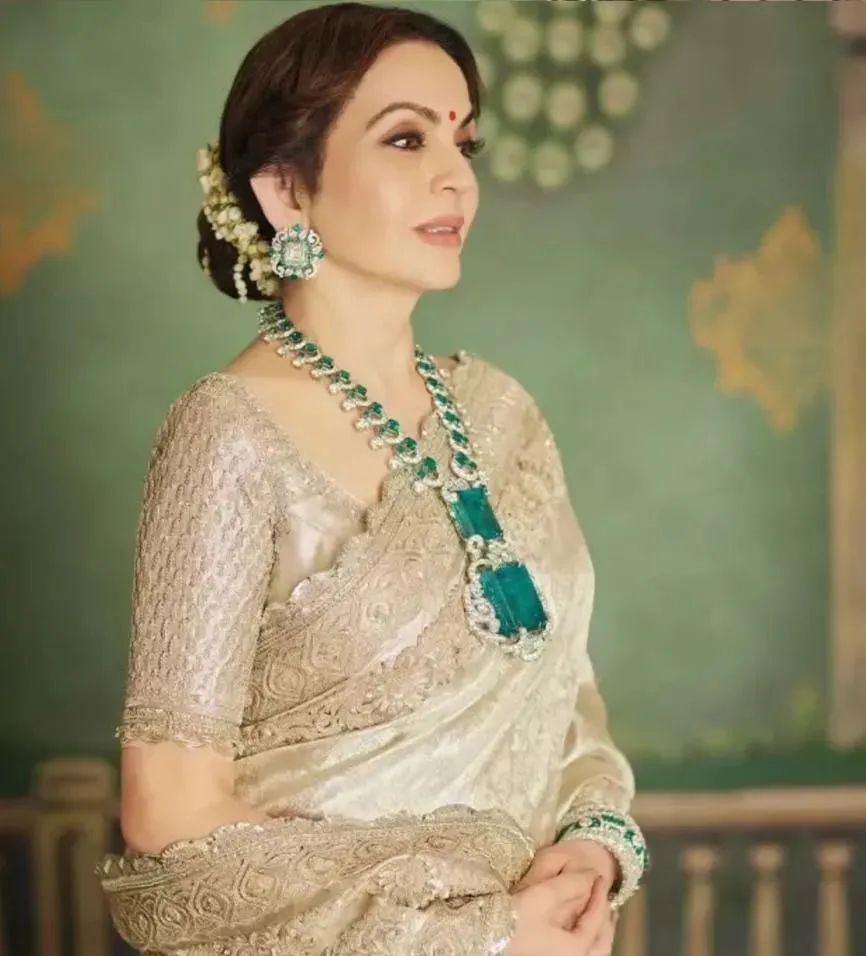
The necklace in question is composed of diamonds and two exceptionally large emeralds. Reports suggest its value is around 400-500 million rupees (approximately $5 million).
On the same occasion, Nita Ambani also sported the “Mirror of Paradise” diamond ring. Yes, you read that correctly – it’s the same 52.58-carat, D color, flawless diamond that made its appearance at Christie’s “Maharajas & Mughal Magnificence” auction in 2019.
Originating from the legendary Golconda mines, this extraordinary gem was sold for $6,517,500, with Nita Ambani emerging as its new owner. The ring perfectly complements her opulent emerald necklace, harmonizing in both style and size.
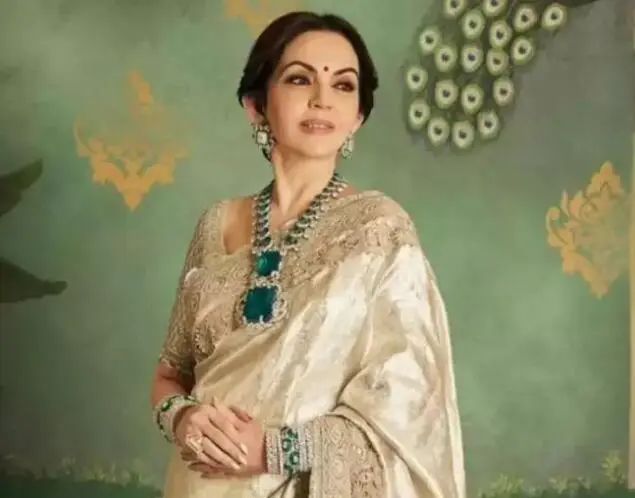
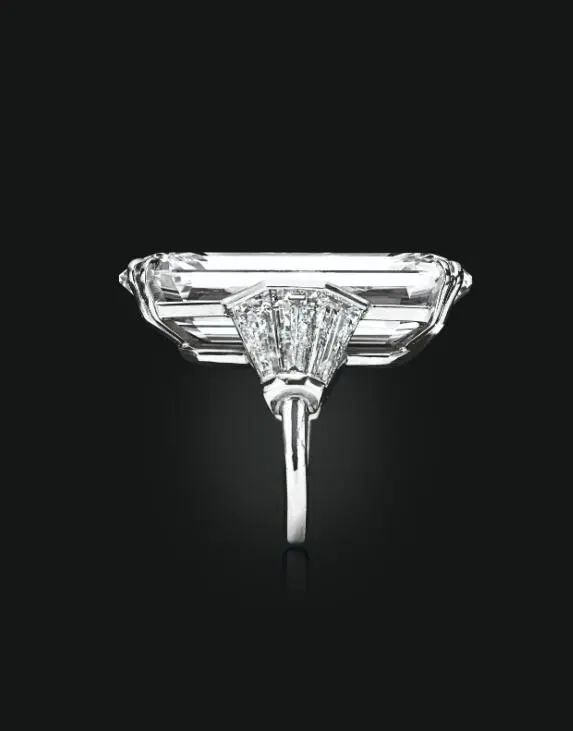
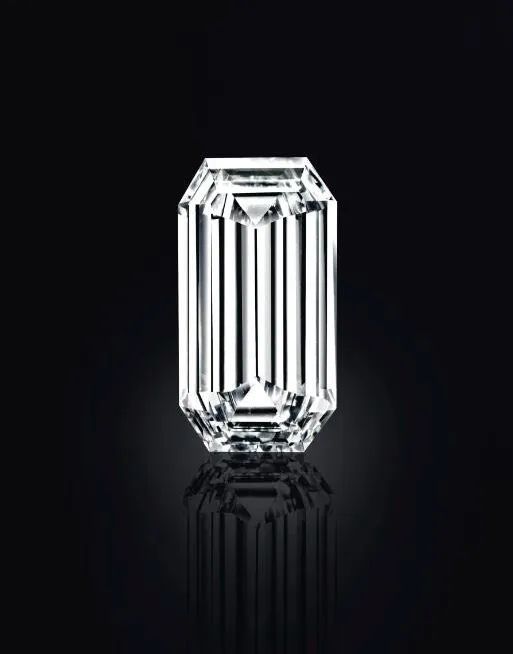
52.58 carats, D color, Flawless
June 2019, Christie’s New York
“Maharajas & Mughal Magnificence” auction
Estimated price: $7,000,000 – $10,000,000
Sold for: $6,517,500
The jewelry collection of Asia’s “richest woman” is beyond imagination in its splendor. Her wearing of this emerald necklace at the party is not to intimidate the bride or to show off wealth, but rather a reflection of the aesthetic preferences of India’s wealthy elite. From the family’s jewelry choices, one can observe that oversized gemstones, layered designs covering the upper body, and head-to-toe coordinated sets are all traditional practices.
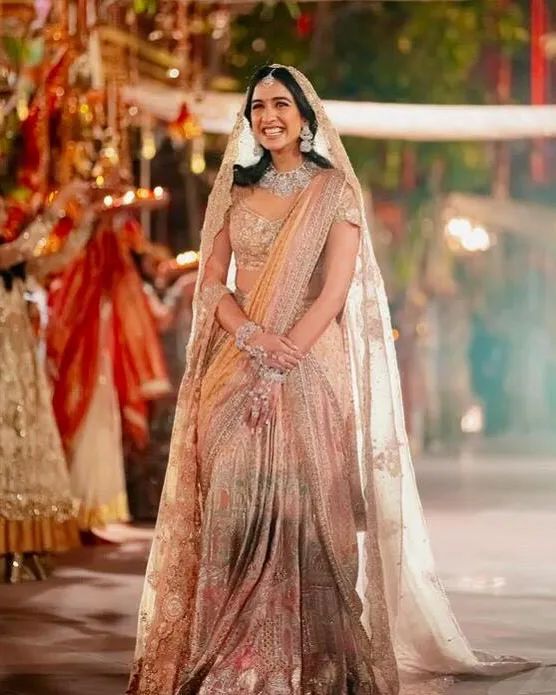
and a full set of traditional Indian diamond jewelry

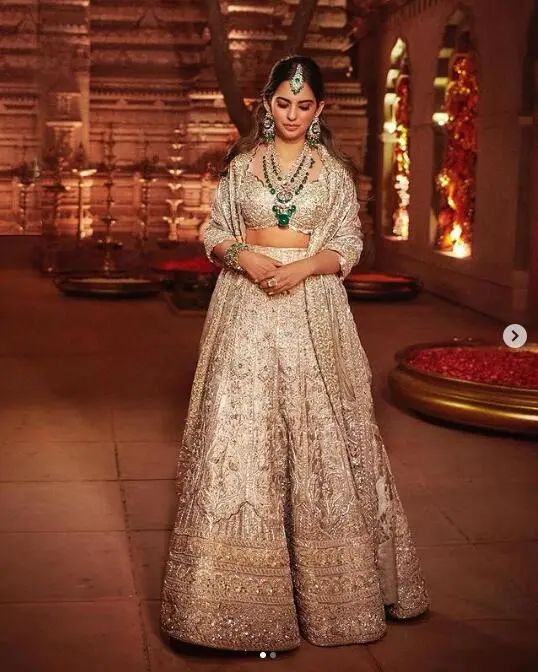
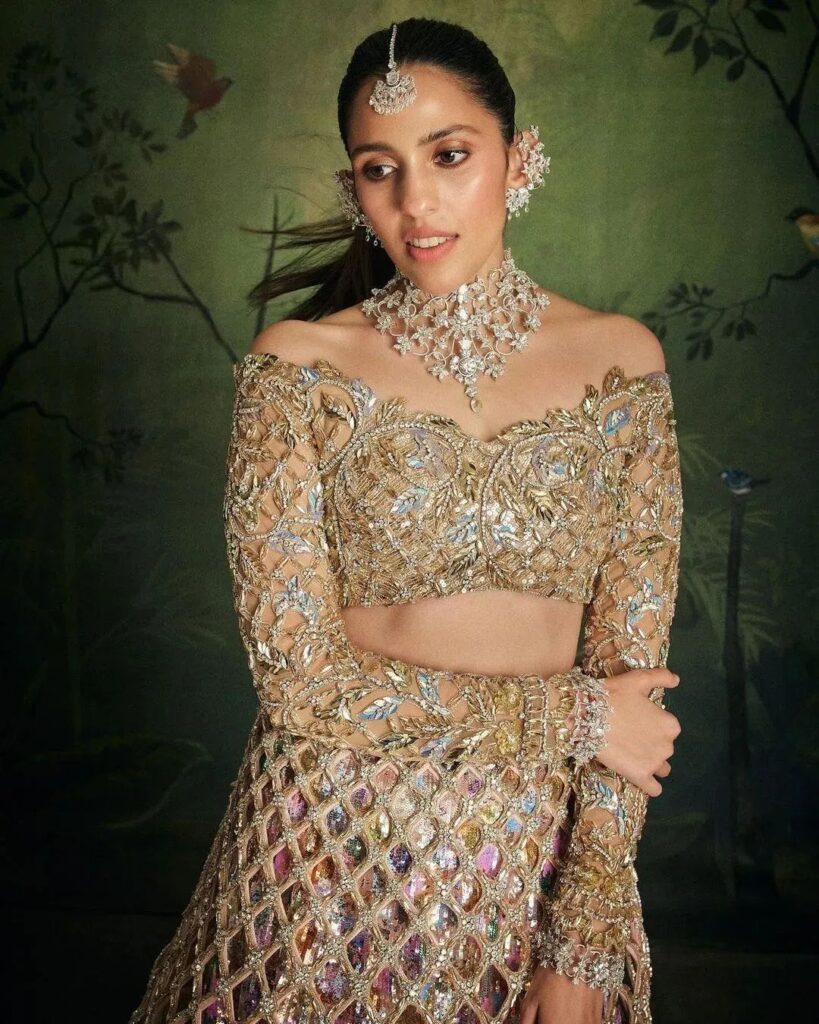
Nita Ambani seems even more generous than Queen Elizabeth II, not only lending her various magnificent jewels to her daughter and daughters-in-law but also gifting her other daughter-in-law, Shloka Mehta, an extraordinary wedding present ten years ago – the “L’Incomparable” necklace, recognized by Guinness World Records as “the most valuable necklace on Earth.”
Indeed, this necklace features what was then the world’s largest flawless diamond, a 407-carat yellow diamond, along with 102 other diamonds, valued at $55 million.
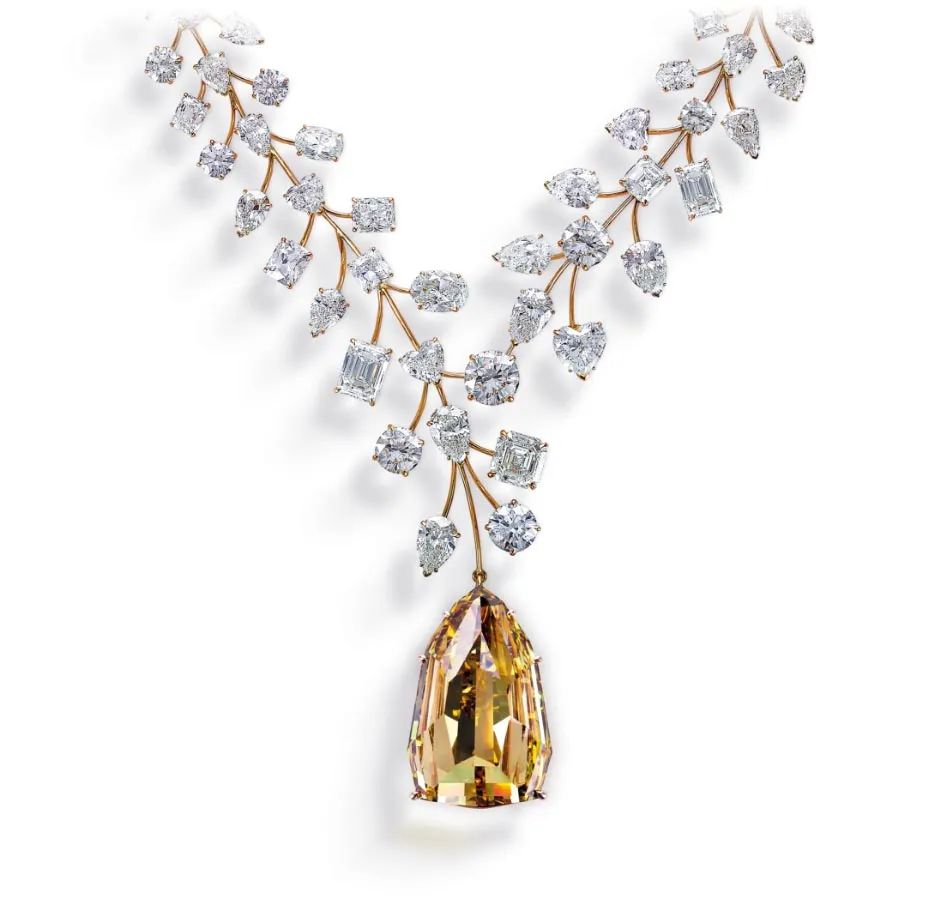
There’s great anticipation for what wedding gift this generous mother-in-law will present to her youngest daughter-in-law at the official wedding ceremony in July. It’s worth noting that the bride, Radhika Merchant, and the groom are true childhood sweethearts, meaning she has also grown up under the watchful eye of her mother-in-law.
Moreover, Radhika shares more common interests with Nita Ambani. Unlike the elder daughter-in-law who holds master’s degrees in law, anthropology, and sociology, Radhika Merchant, like Nita Ambani, is a professional classical Indian Bharatanatyam dancer, also known as a “devadasi” or “one who dances for the gods.”
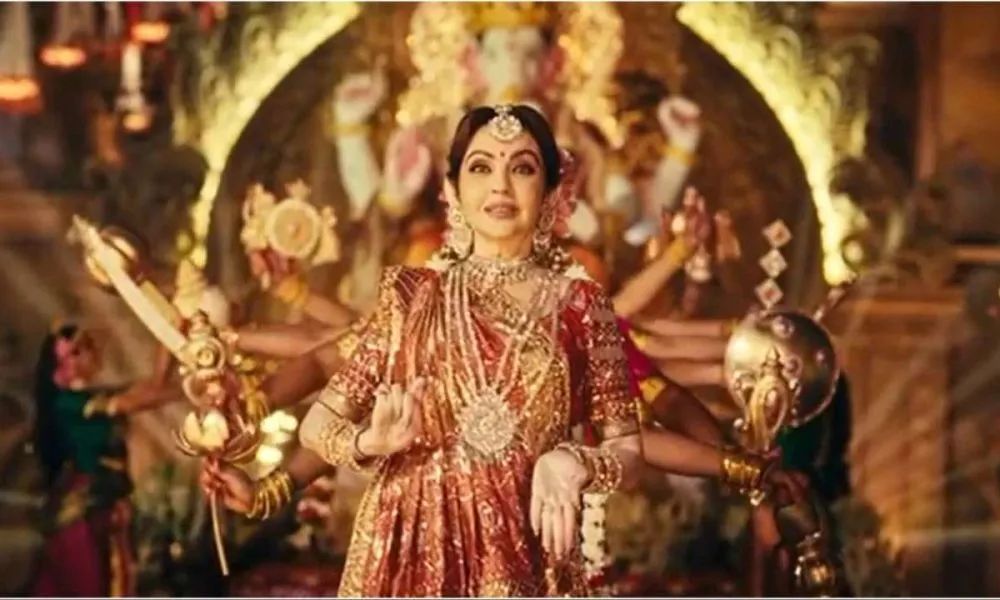
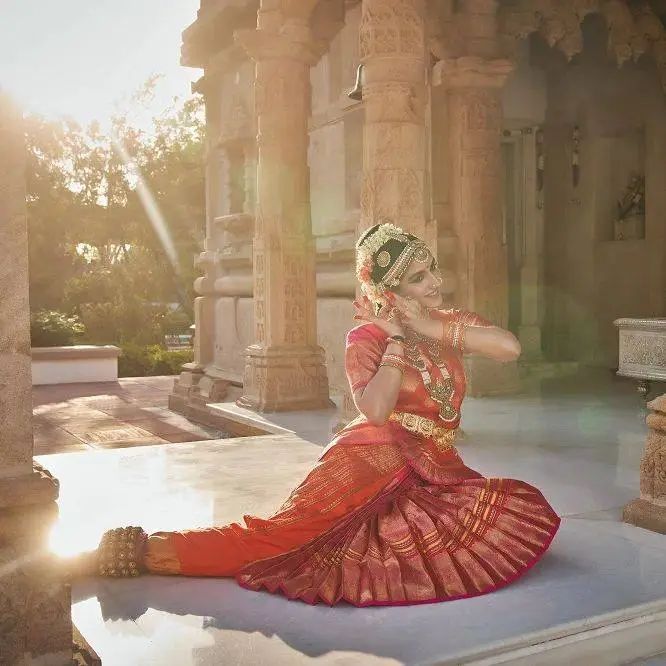
While we may view the jewelry taste of Asia’s wealthiest woman as excessively luxurious, she is actually following tradition. If you recall, during the period of East-meets-West in the last century, when Indian “tycoons” flocked to Paris to commission custom jewelry, bringing chests full of gemstones for custom designs was standard practice!
Don’t believe it? Let’s take a look back at this exotic chapter in jewelry history~
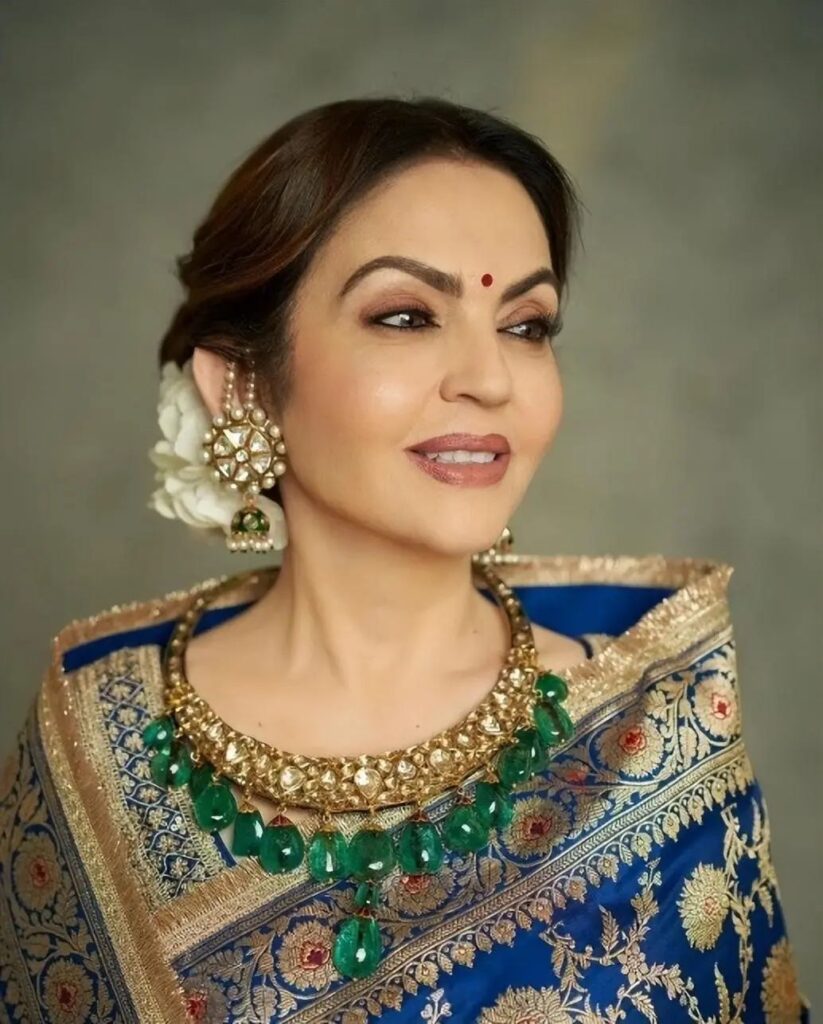
When discussing Indian jewelry, we must first talk about the ultra-fashionable Indian maharajas. Unlike European royalty, where women primarily showcased jewels, the princely rulers of India’s Mughal Empire were themselves style icons in the jewelry world.
Their taste was no less refined than that of European queens and princesses, as evidenced by a series of auctions that offer a glimpse into the allure of these jewelry icons through their collections.
Maharaja of Patiala Bhupinder Singh
The Maharaja of Patiala, Bhupinder Singh, was a jewelry collector deeply loyal to his country’s traditional tastes, emphasizing size and quantity. In 1925, he walked into Cartier with a large collection of gemstones and diamonds, commissioning them to create a multi-layered necklace.
Among these loose stones was the 234.69-carat De Beers diamond, inherited from his father. This golf ball-sized yellow diamond was then the seventh-largest polished diamond in the world.

Cartier completed the order in 1928, creating the Patiala Necklace. It was a combination of a 5-tier diamond necklace and a choker, set with 2,930 diamonds and three Burmese rubies.
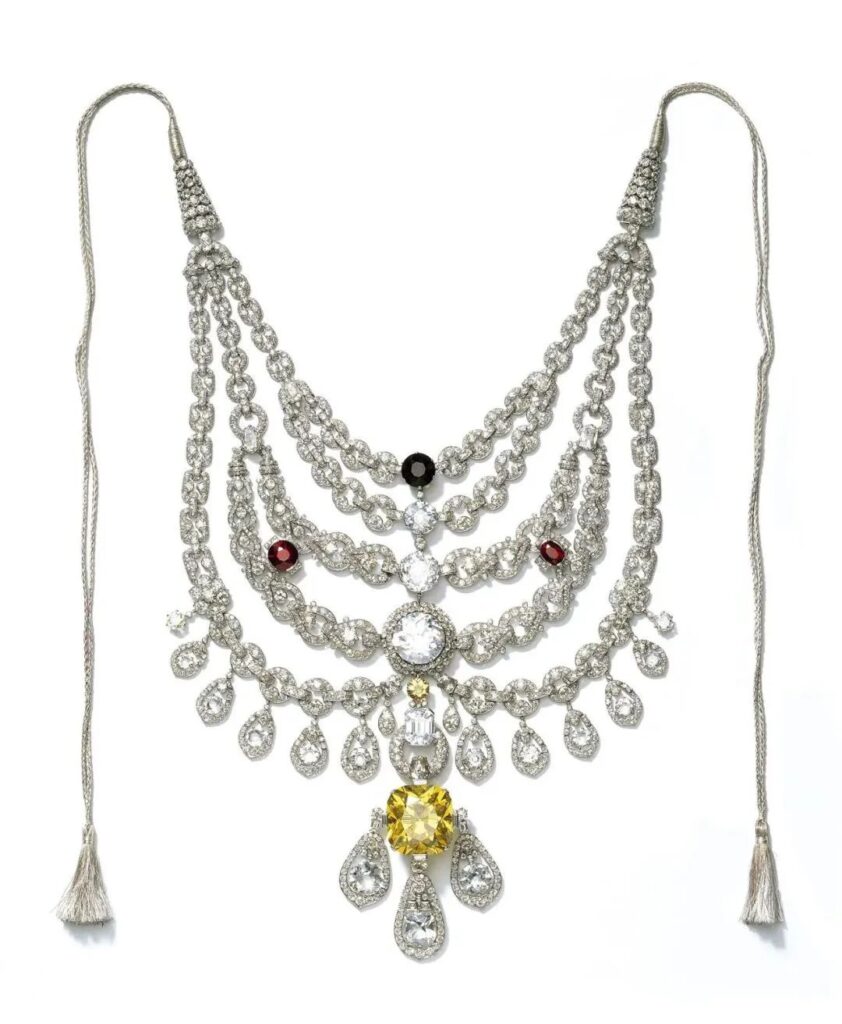
The Patiala Necklace was last seen in a photograph from 1946, worn by the prince’s son, Yadavindra Singh. However, in 1948, it was reported missing from the Maharaja’s royal treasury.
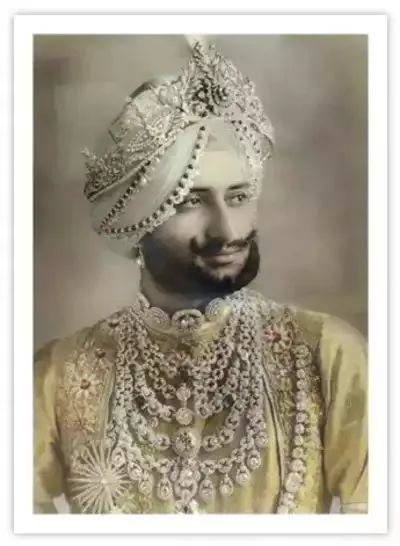
In 1998, Cartier discovered part of this necklace, or rather its “skeleton,” in a second-hand shop in London. Most of the diamonds, rubies, and the De Beers yellow diamond were missing. Cartier spent 4 years restoring its appearance using cubic zirconia and synthetic rubies.
However, the diamond choker part of the necklace was undoubtedly found, as it was worn by popular blogger Emma Chamberlain at the 2022 Met Gala.
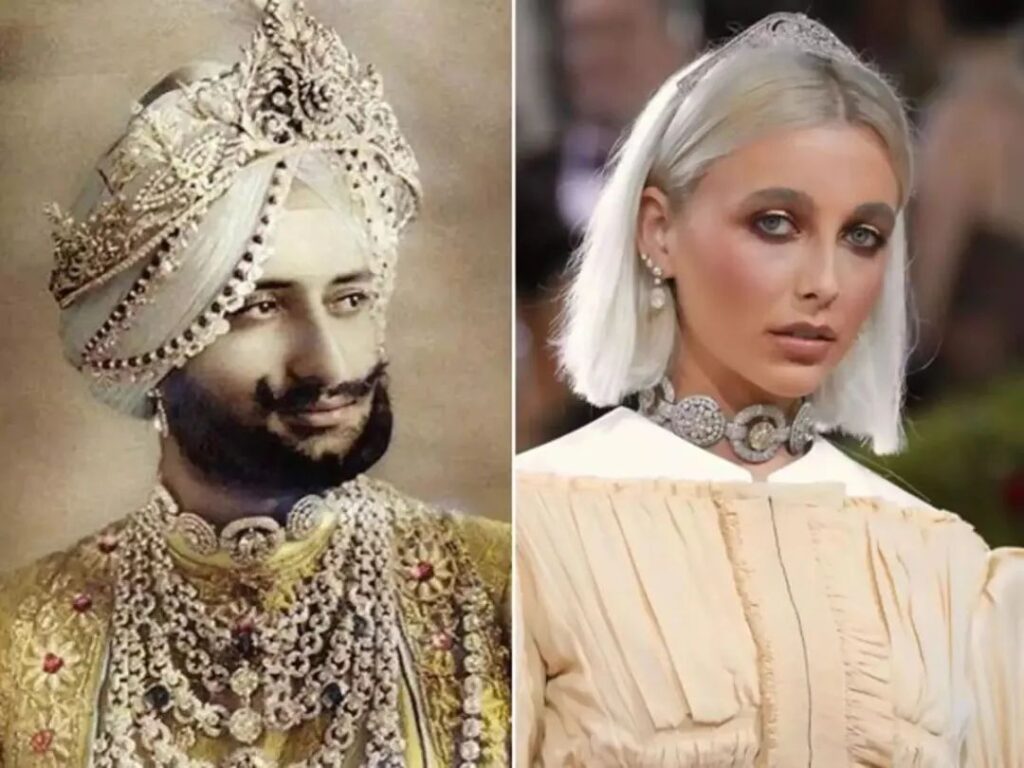
Maharaja Jagatjit Singh of Kapurthala
Maharaja Jagatjit Singh of Kapurthala was a jewelry collector known for his adaptability. As many know, India has a unique headpiece called the Sarpech, a large jeweled ornament worn by noble Indian men on their turbans. It originally evolved from the Persian feather headdress Kalgi, transforming into the all-gold and gemstone Sarpech during the Mughal era.
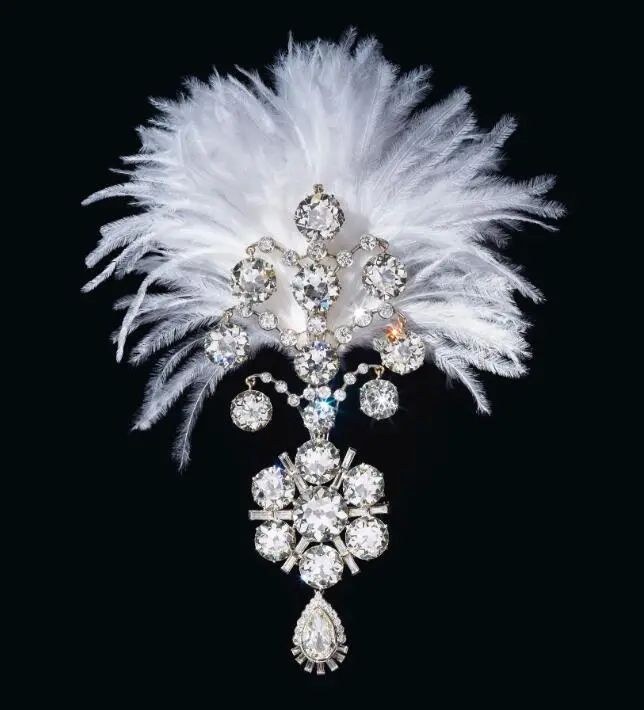
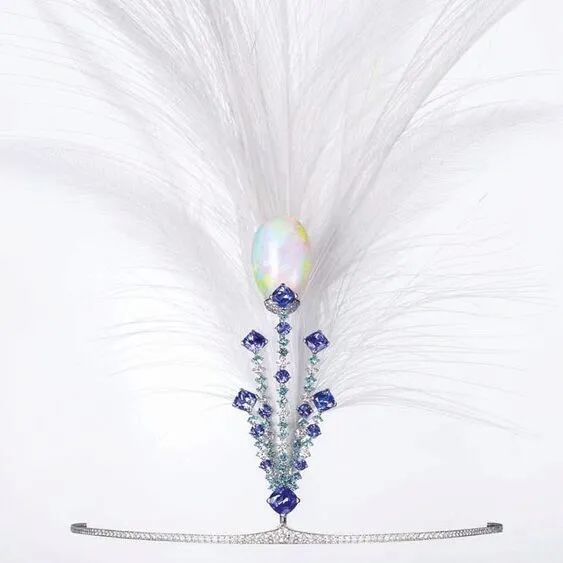
The Sarpech closely resembles the European Aigrette tiara, differing mainly in how it’s worn. The Aigrette itself was inspired by Ottoman Sultan’s turban decorations, indicating a deep connection between these two jewelry styles.
In 1905, during his Paris trip, the Maharaja was captivated by Mellerio dits Meller’s enamel and diamond peacock Aigrette, as the peacock is a sacred bird in India and now its national bird.
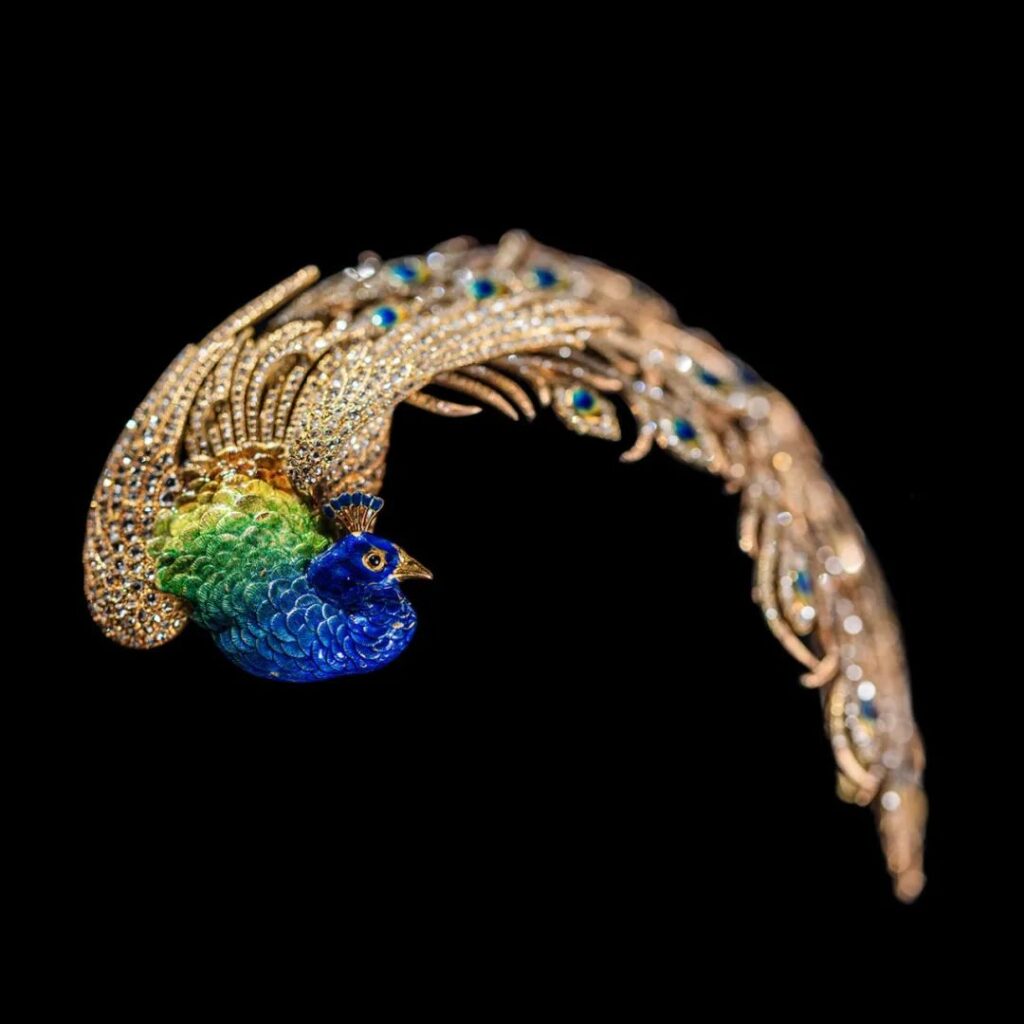
This intricate and figurative beauty aligned perfectly with the aesthetic preferences of Indian maharajas. He immediately purchased it, and reportedly wore this peacock jewel on his turban when he met his fifth wife, Anita Delgado. He later gifted it to her as a token of his affection.
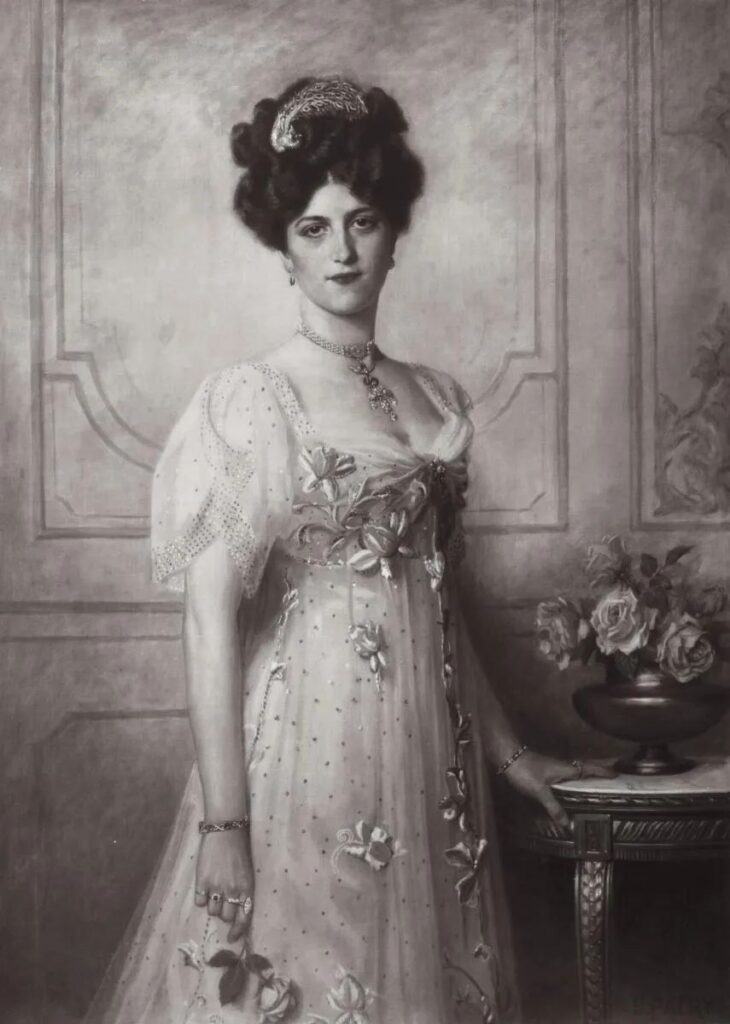

Yeshwant Rao Holkar II
The Maharaja of Indore, Yeshwant Rao Holkar II, was a complete modernist. He and his wife were thoroughly Westernized, having been educated in England and becoming style icons in Paris with their luxurious and elegant lifestyle. He was a VVIP client of French jewelry brands like Cartier, Chaumet, Mauboussin, and Van Cleef & Arpels, commissioning many modern jewels with Indian influences.
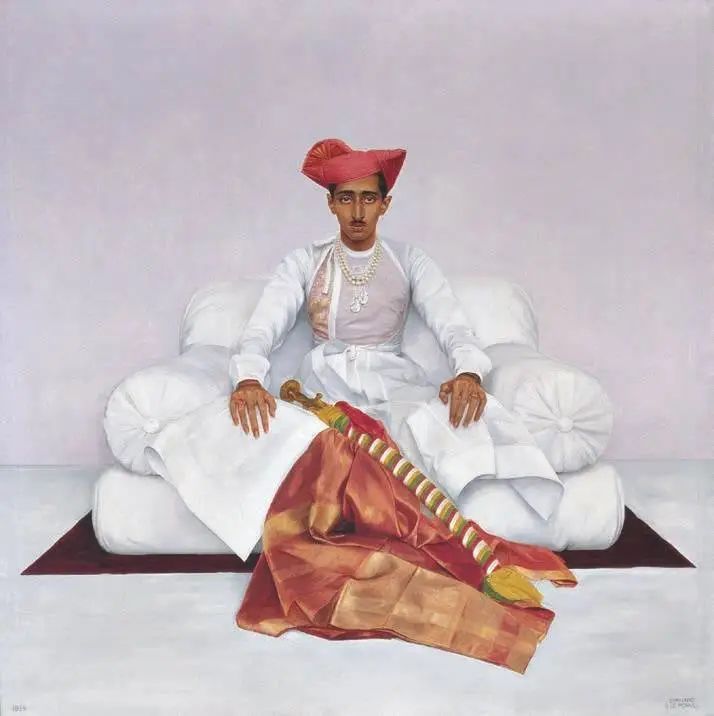
One of the most representative pieces was the “Indore Sapphire” necklace made by Cartier. It features a very simple design with an 18th-century oval 23.20-carat sapphire suspended from a platinum chain in the style of a traditional Indian Taveez pendant.
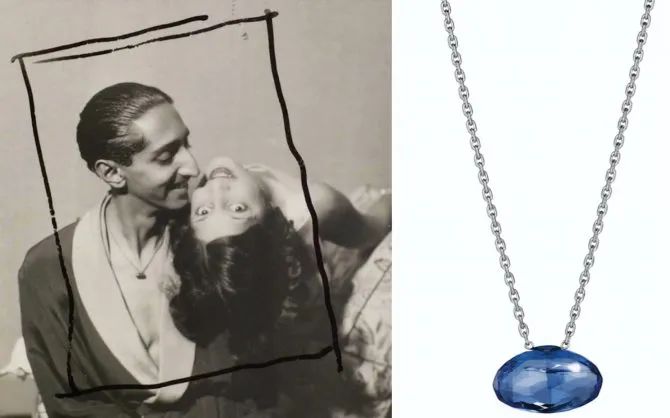
When ordering from Van Cleef & Arpels, the Maharaja of Indore followed the most popular jewelry trends of the time while maintaining his Indian aesthetic. For example, the ruby ear clips from 1930 incorporated Art Deco-style streamlined elements but in the form of traditional Indian dangling long earrings.
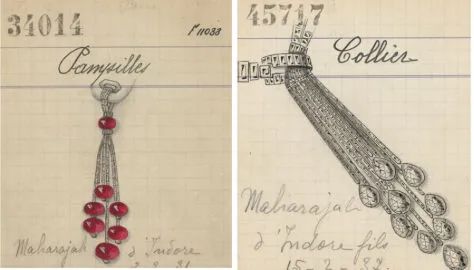
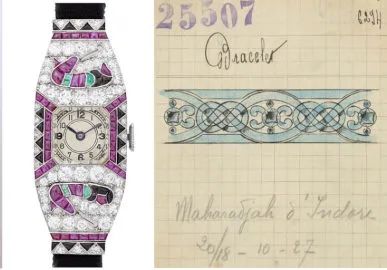
From the jewelry collections of these Indian maharajas, we can see that whether they were traditionalists or modernists, they all shared the same pursuit: an extremely high demand for gemstone quality. This was closely related to the environment they grew up in.
The Golconda mines, which produced the highest grade diamonds, were in India. Kashmir, which produced rare sapphires, also belonged to them at the time. The highly sought-after Burmese rubies were not far away, and the finest quality emeralds came to India from Colombia through the Portuguese-controlled port of Goa via trade exchanges.
It can be said that Indian maharajas never lacked gemstones, so their jewelry inevitably used the highest quality stones.
The Indian style also fully “invaded” the Western jewelry world in the first half of the 20th century. That gorgeous and dazzling exotic style swept through European high society along with the luxurious maharajas. Almost every major jewelry brand had maharaja clients, naturally influencing their use of gemstones, design styles, and even craftsmanship. Among these, one of the most representative brands was Cartier.


Cartier’s love for India began around 1911. Jacques Cartier set out from London with a caravan to the Delhi Durbar to celebrate the coronation of King George V as Emperor of India. He was greatly inspired there, purchased a large number of gemstones, and shared the Oriental jewelry style with his brothers Louis and Pierre.
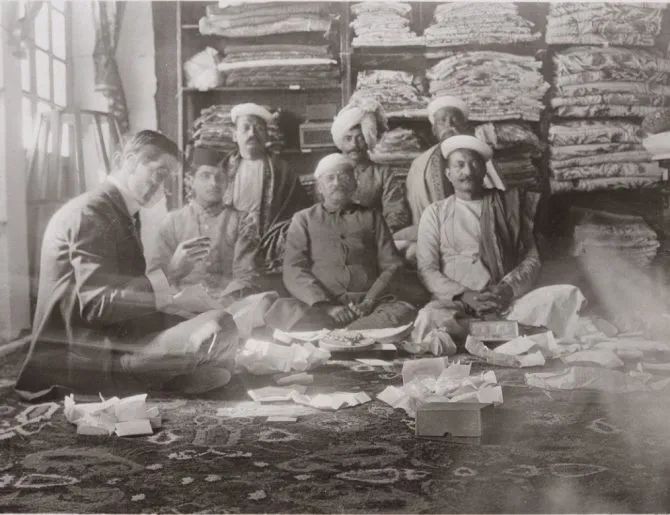
So in 1925, Cartier completely changed its attitude at the Paris International Exhibition of Modern Decorative and Industrial Arts, turning from the bows, ribbons, and floral patterns of the British and French courts to the Art Deco movement.
The Indian-style jewelry of the maharajas became an important part of their new style. The original series, mainly featuring diamonds, pearls, and platinum, was infused with colorful cabochon and carved gemstones. Cartier combined its patterns with traditional Mughal Empire patterns to create jewelry masterpieces that were both modern and ancient, blending Eastern and Western cultures.
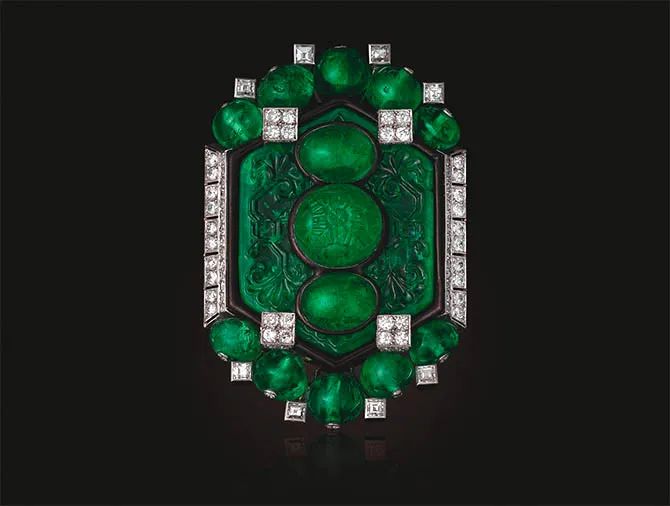
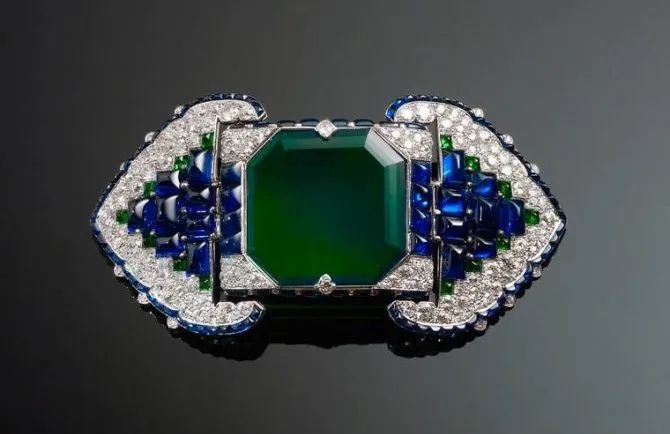
One piece that caught media attention at the exhibition was the Collier Bérénice Cartier, a jewelry piece that broke through in style, craftsmanship, and even how it was worn. It was a necklace designed to hang on the shoulders, centered around a 141.13-carat carved hexagonal Taj Mahal emerald. This carved emerald later appeared in Christie’s “Maharajas & Mughal Magnificence” auction, selling for $1,815,000.
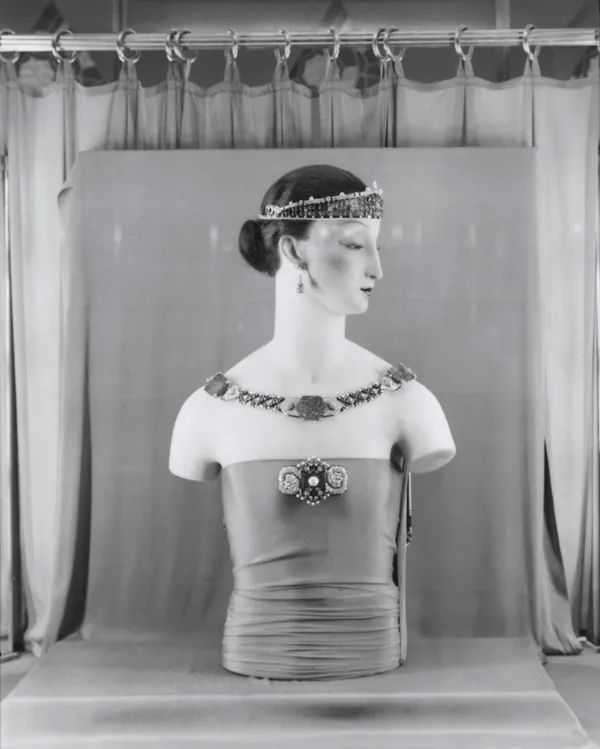
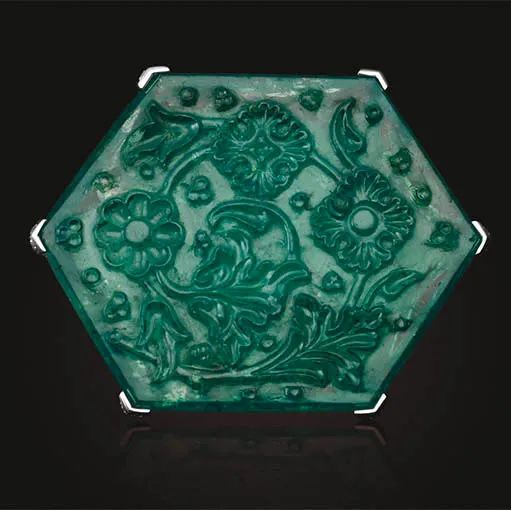
The central “Taj Mahal Emerald” is a carved emerald weighing 141.13 carats
Cartier had many Indian maharaja clients who often brought their own vast collections of gemstones. Cartier was responsible for cleverly designing and crafting them, producing a large number of magnificent jewelry pieces in the 1920s and 1930s. These experiences and aesthetics were fully integrated by Cartier, later leading to their classic series – Tutti Frutti and Bib Necklace.
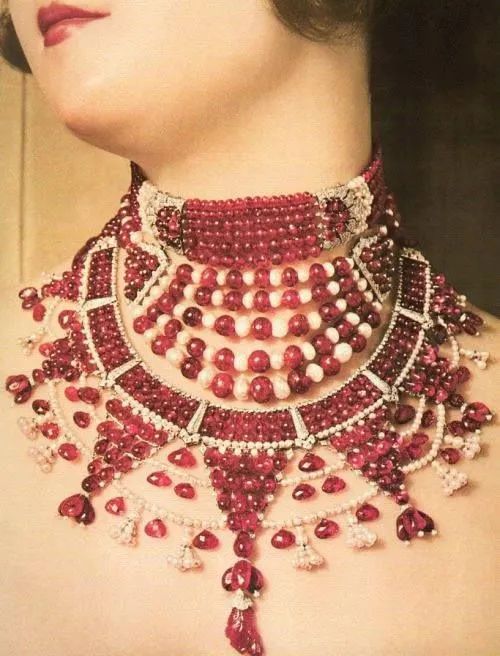
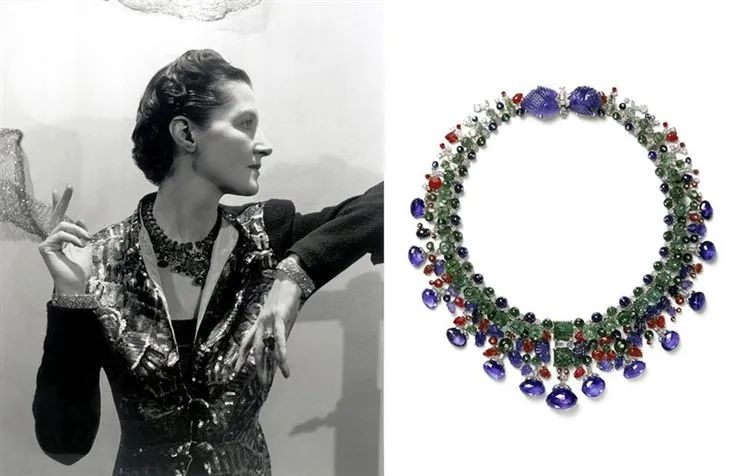
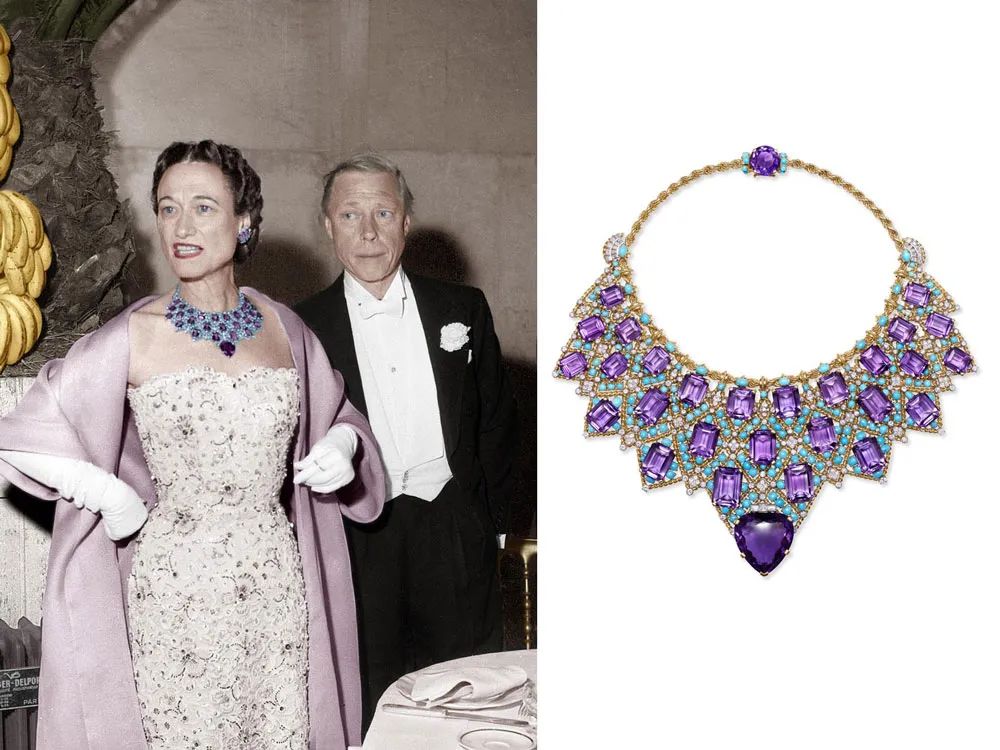
Another jewelry brand deeply influenced by Indian culture is Boucheron. In 1928, the Maharaja of Patiala arrived at Boucheron’s shop in Place Vendôme. His guards carried safes filled with precious gemstones, including rubies, emeralds, pearls, and of course, diamonds.
After examining the gems, Boucheron selected 7,571 diamonds, 1,432 emeralds, and other gemstones to create a spectacular collection consisting of 149 unique pieces of jewelry. From then on, the Indian style became a proud part of Boucheron’s brand history.
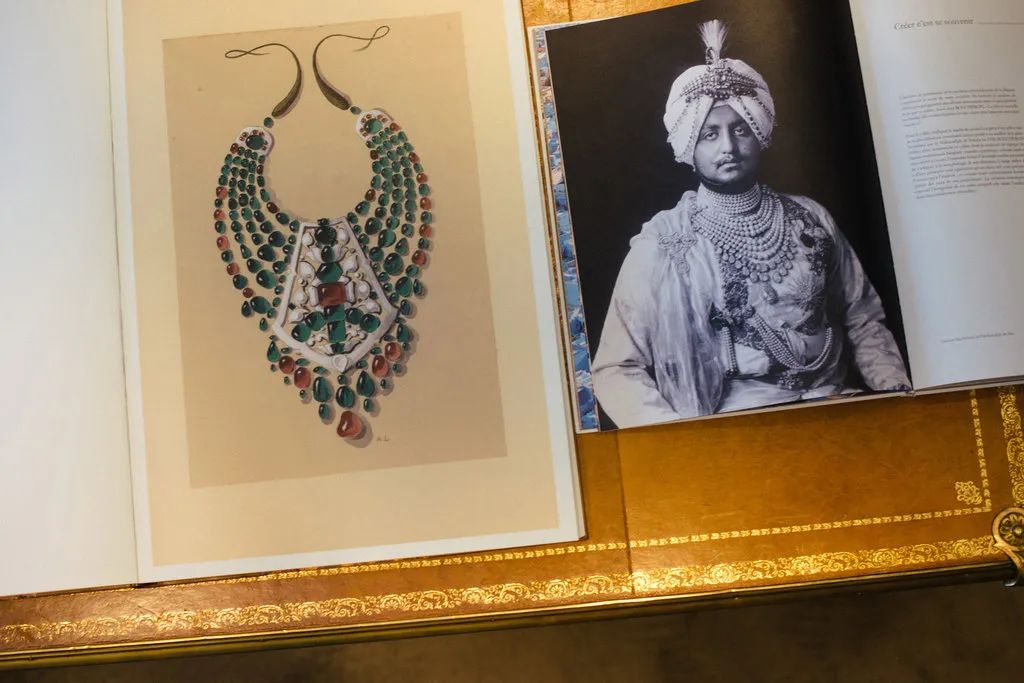
Boucheron’s Creative Director Claire Choisne has paid tribute to the Indian style more than once in her high jewelry collections. When she joined Boucheron, this was the first brand story she was told. She said, “It’s a fascinating story, very surprising. While browsing through the archives, I felt I couldn’t miss the Maharajah designs. They were impressive… I was completely captivated by this story and these works.”
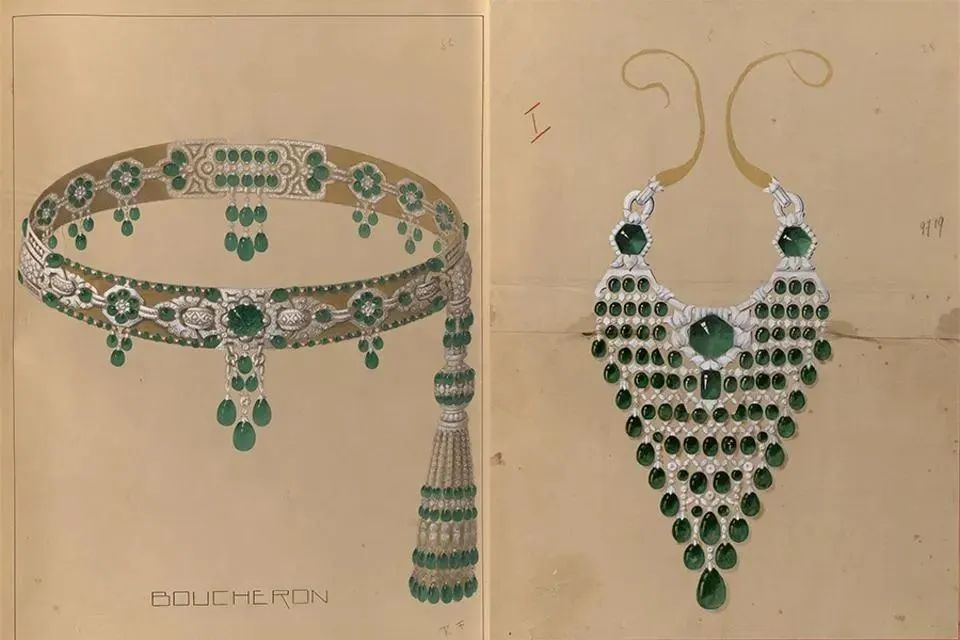
Indeed, Claire Choisne subsequently launched the Bleu de Jodhpur high jewelry collection and the New Maharajahs high jewelry collection. The former pays homage to Louis Boucheron’s first journey to Jodhpur, India, in 1909. She even personally traveled to the Indian city known as the “Sun City” to meet with Gaj Singh II, drawing inspiration to design the architecturally styled Bleu de Jodhpur high jewelry collection.

Bleu de Jodhpur high jewelry collection
Double-sided necklace
In 2022, Claire Choisne introduced another collection paying tribute to history: the Histoire de Style: New Maharajahs high jewelry collection. She infused modern elements into the maharaja’s treasures of the past.
After all, these jewels were originally designed for men and had to be reduced in size to suit women. At the same time, she used white and transparent crystals to harmonize the overall color, making the entire collection less extravagant and more artistic.
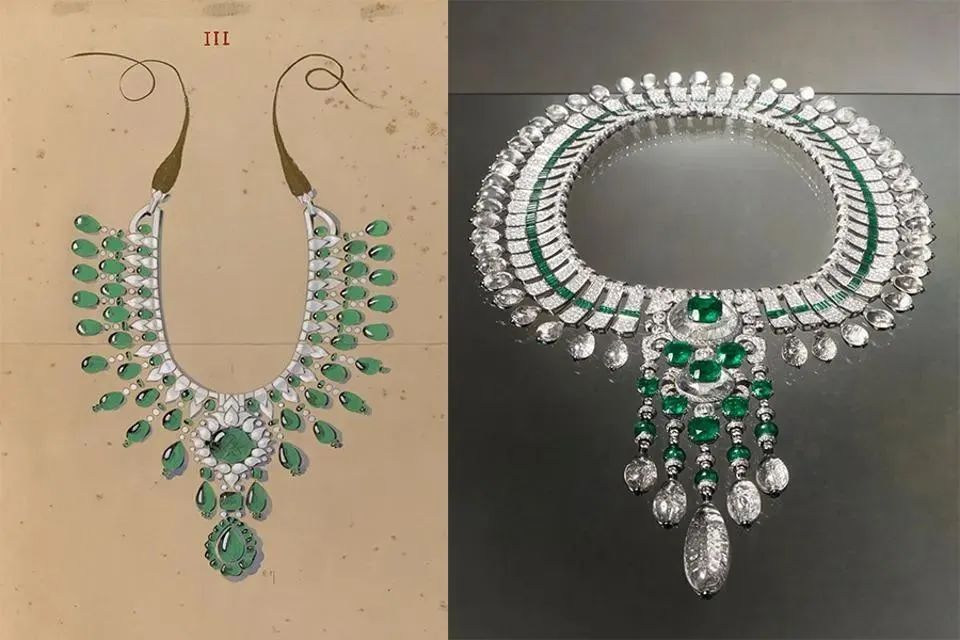
Histoire de Style: New Maharajahs
High jewelry collection inspired by design sketches from the archives
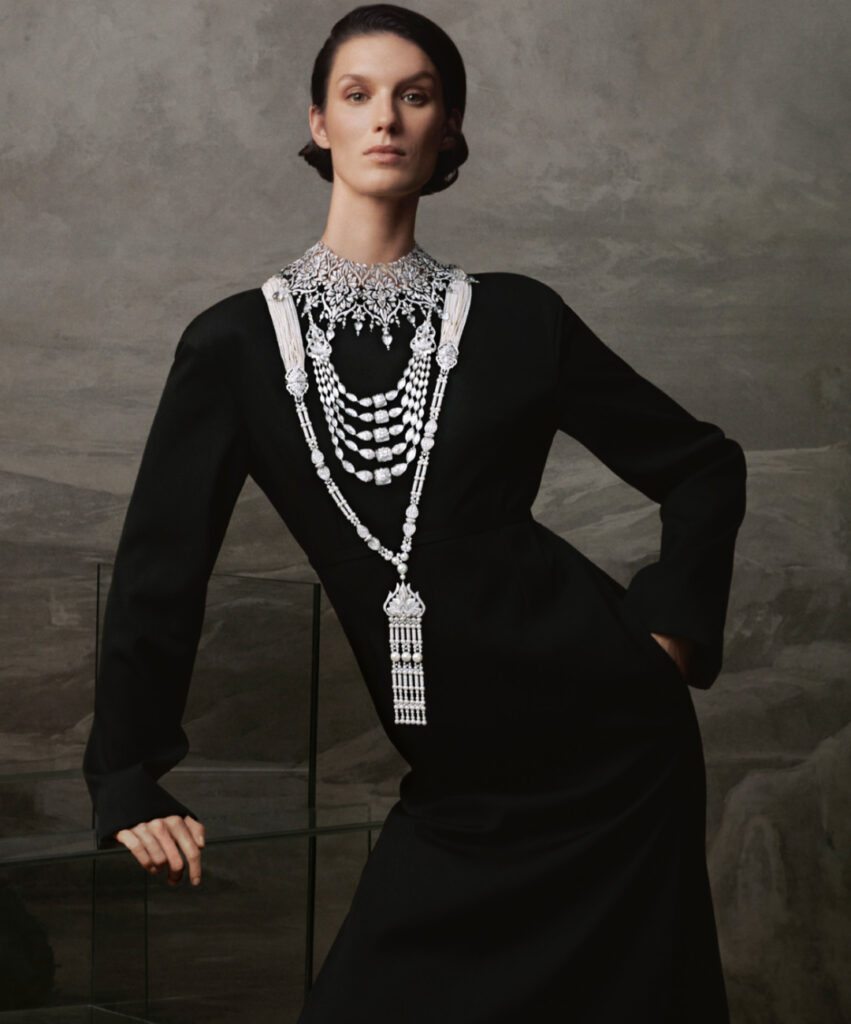
Histoire de Style: New Maharajahs
High jewelry collection
Chaumet Paris also had a distinguished client in Maharaja Tukoji Rao III, known as Holkar 13, who was a ruler from the state of Indore (he was the father of the previously mentioned Maharaja Yeshwant Rao Holkar II). During his reign (1903-1926), he purchased over 1,200 pieces of jewelry, including the Indore Pears diamond necklace bought from Chaumet Paris in 1913.
This necklace was designed like a sleepwear strap, set with two pear-shaped diamonds weighing 46.95 carats and 46.70 carats respectively. We can see his son, Maharaja Yeshwant Rao Holkar II, wearing it layered with a pearl necklace in his portrait.
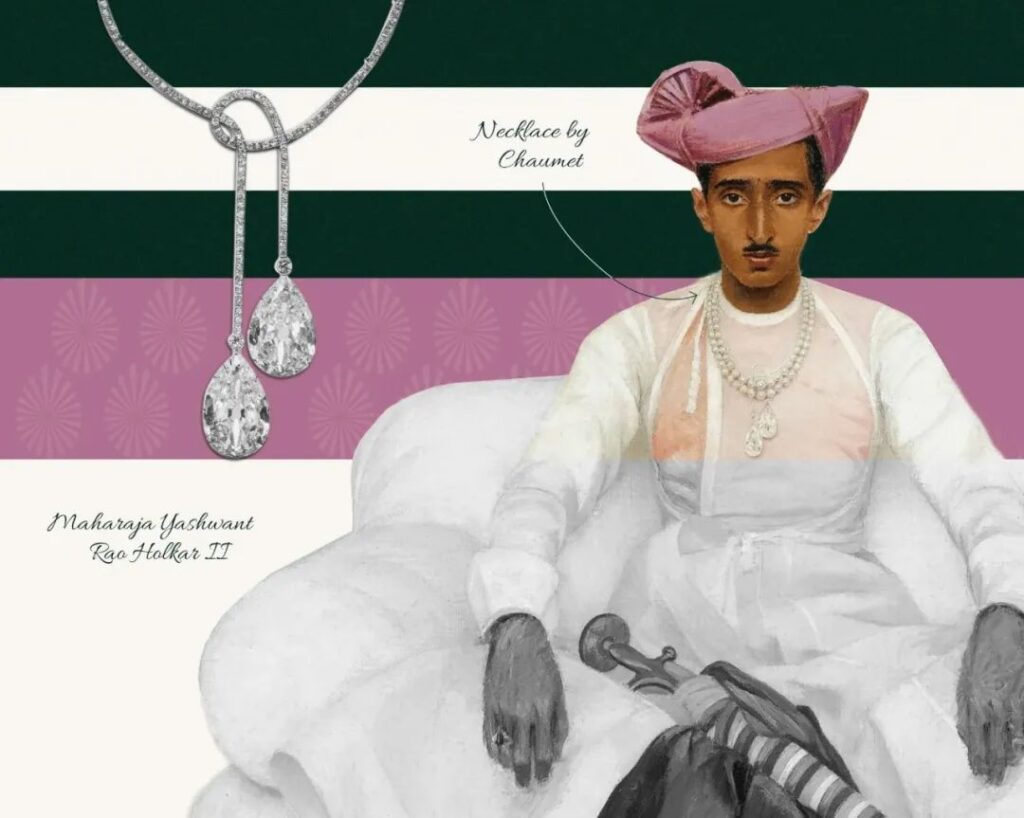
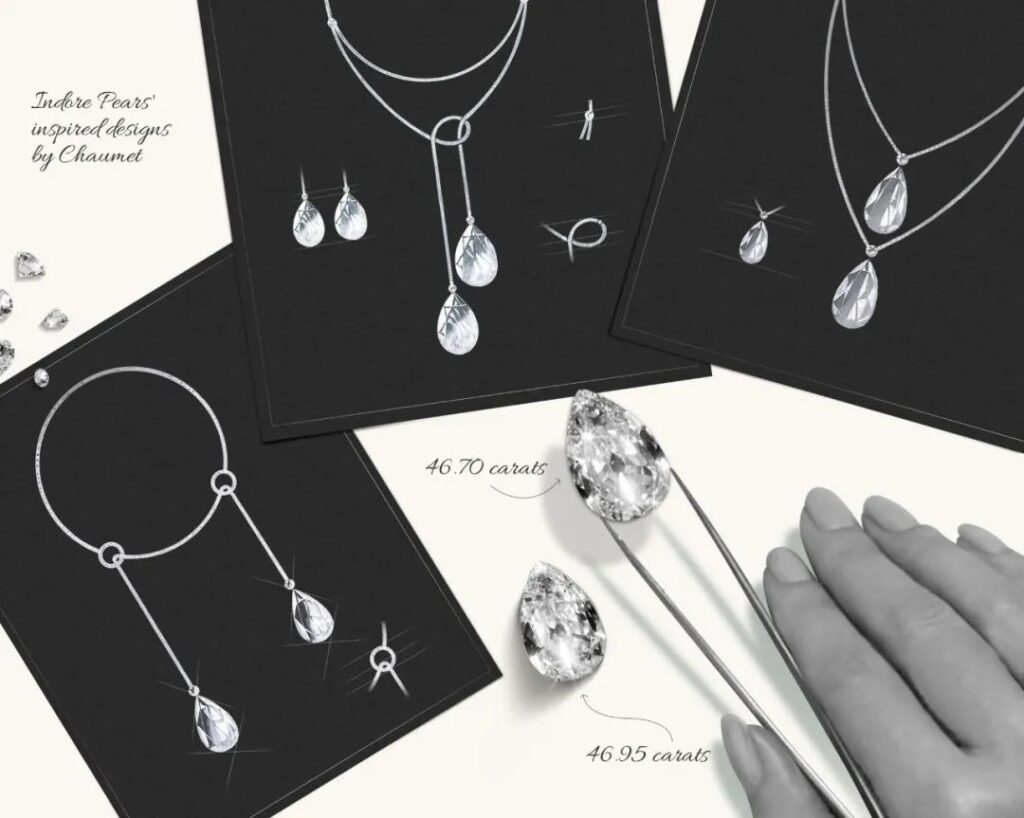
Joseph Chaumet was one of Holkar 13’s favorite jewelers, designing many pieces for the maharaja. Many of these designs featured multiple ways of wearing to accommodate the maharaja’s need for versatility with different outfits.
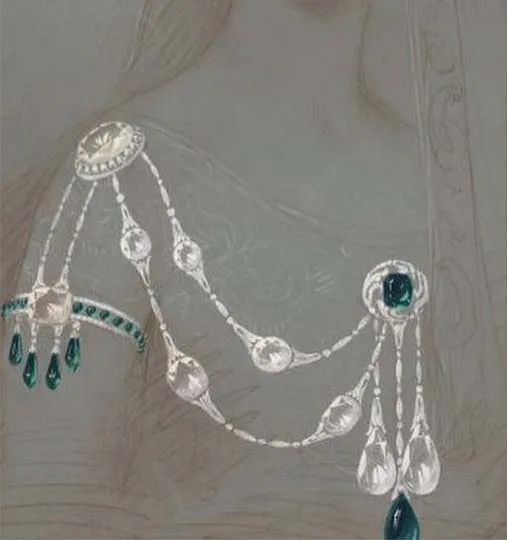
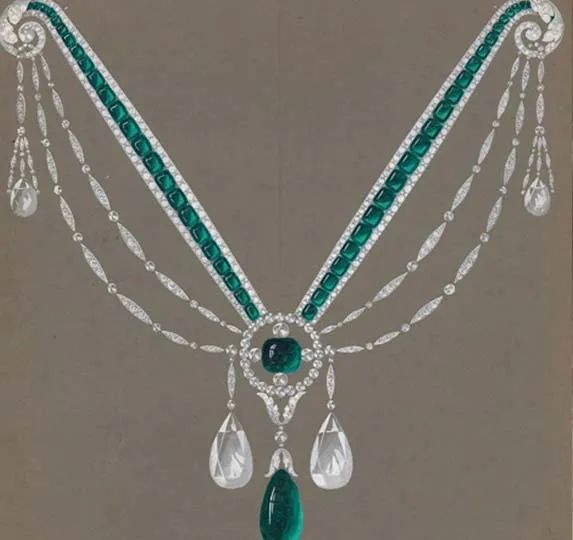
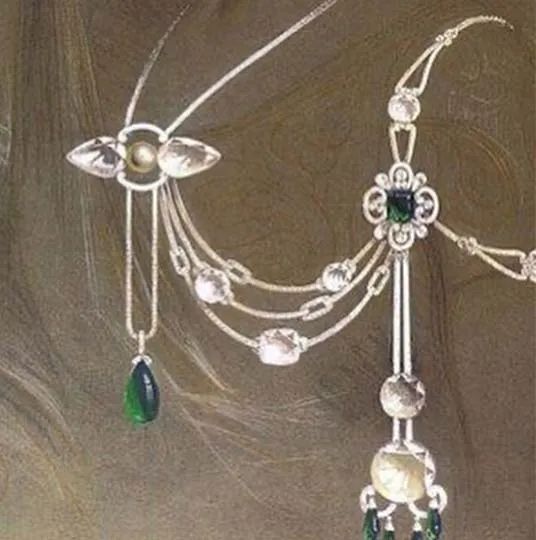
Chaumet Paris also preserved a brilliant chapter of Indian-inspired jewelry in its archives. In the “Chaumet Treasures of Art World Tour,” they exhibited jewelry deeply influenced by Indian culture, such as the “Dancing Girl” long necklace and the “Peacock Feather” sapphire convertible brooch.
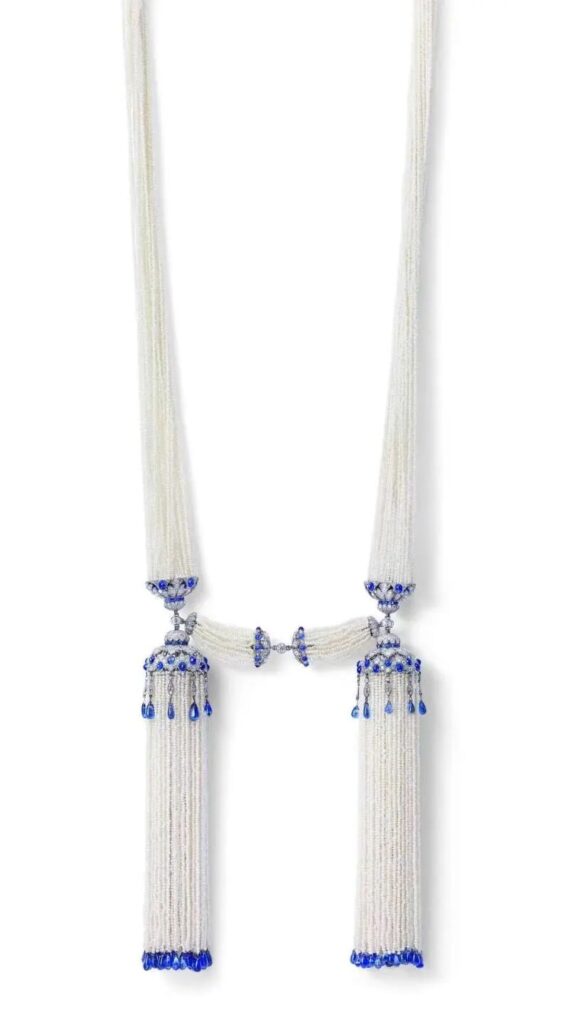
“Dancing Girl” long necklace

“Peacock Feather” convertible brooch
Indeed, the Indian style has become quite a classic in the jewelry world. After being refined by Western aesthetic masters and modernist transformations, these pieces are not as traditionally “extravagant” as Nita Ambani’s style.
The unique color combinations, exquisite materials, and interesting designs of Indian-inspired jewelry are actually quite worthy of collection for enthusiasts. If you have the chance, it’s really worth trying!
Asian Billionaire’s Son’s Wedding Showcases Colossal Emeralds and Diamonds: India’s Jewelry Game is on Another Level!
Tweet





